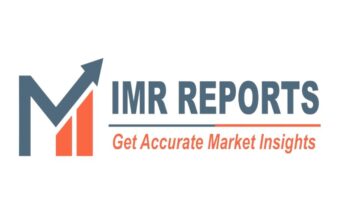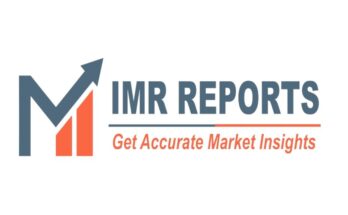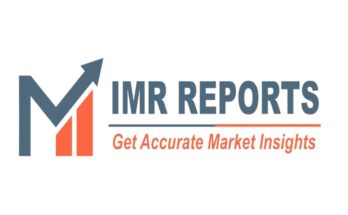The Blue Hydrogen Global Market Report 2024 by The Business Research Company provides market overview across 60+ geographies in the seven regions – Asia-Pacific, Western Europe, Eastern Europe, North America, South America, the Middle East, and Africa, encompassing 27 major global industries. The report presents a comprehensive analysis over a ten-year historic period (2010-2021) and extends its insights into a ten-year forecast period (2023-2033).
Learn More On The Blue Hydrogen Market:
https://www.thebusinessresearchcompany.com/report/blue-hydrogen-global-market-report
According to The Business Research Company’s Blue Hydrogen Global Market Report 2024, The blue hydrogen market size is expected to see rapid growth in the next few years. It will grow to $29.61 billion in 2028 at a compound annual growth rate (CAGR) of 12.3%. The growth in the forecast period can be attributed to increasing investment in R&D, rising carbon pricing, expansion of hydrogen infrastructure, cost reduction in production technology, growing renewable energy capacity, international cooperation, and corporate sustainability goals. Major trends in the forecast period include hydrogen production processes, integration with renewable energy sources, expansion in the transportation sector, increased usage in power generation, technological innovations in storage and distribution, scaling of hydrogen projects, and cross-industry partnerships.
The increasing demand for chemical production is expected to propel the growth of the blue hydrogen market going forward. Chemical production is the industrial process of transforming raw materials into chemical products through chemical reactions and processes. The growing demand for chemical production stems from expanding industrial sectors, and the rising need for innovative materials and solutions across various industries. Blue hydrogen is gaining traction in chemical production due to its role as a cleaner alternative to traditional hydrogen sources. It is used primarily as a feedstock in processes such as ammonia production, where hydrogen is a critical component. For instance, in October 2023, according to the International Energy Agency (IEA), a France-based autonomous intergovernmental organization, global ammonia production will constitute approximately 2% (8.6 EJ) of total final energy consumption. Furthermore, ammonia production is projected to increase by nearly 40% by the year 2050. Therefore, increasing demand for chemical production will drive the growth of the blue hydrogen market.
Get A Free Sample Of The Report (Includes Graphs And Tables):
https://www.thebusinessresearchcompany.com/sample.aspx?id=17099&type=smp
The blue hydrogen market market covered in this report is segmented –
1) By Technology: Steam Methane Reforming (SMR), Gas Partial Oxidation (POX), Auto Thermal Reforming (ATR)
2) By Transportation Mode: Pipeline, Cryogenic Liquid Tankers
3) By End User: Petroleum Refineries, Chemical Industry, Power Generation Facilities, Other End Users
Major companies operating in the blue hydrogen market are advancing production technologies with low-carbon hydrogen (LCH) technology to enhance efficiency and reduce carbon emissions, aligning with global sustainability goals. LCH technology for blue hydrogen production integrates natural gas reforming with carbon capture and storage (CCS) to reduce greenhouse gas emissions, enhancing sustainability in hydrogen production. For instance, in October 2023, Johnson Matthey, a UK-based provider of sustainable technologies, entered into a licensing and engineering agreement with BP p.l.c., a UK-based oil and gas company, for JM’s LCH technology to be implemented at BP’s proposed flagship low-carbon (blue) hydrogen facility in Teesside (England), known as H2Teesside. This technology, combining a gas-heated reformer with an autothermal reformer (GHR-ATR), offers the industry’s highest efficiency in natural gas usage and can capture up to 99% of carbon dioxide emissions. This positions H2Teesside to achieve the lowest levelized cost of hydrogen (LCOH) and the highest carbon efficiency among current low-carbon (blue) hydrogen production technologies.
The blue hydrogen market report table of contents includes:
1. Executive Summary
2. Market Characteristics
3. Market Trends And Strategies
4. Impact Of COVID-19
5. Market Size And Growth
6. Segmentation
7. Regional And Country Analysis
……..
27. Competitive Landscape And Company Profiles
28. Key Mergers And Acquisitions
29. Future Outlook and Potential Analysis
Contact Us:
The Business Research Company
Europe: +44 207 1930 708
Asia: +91 88972 63534
Americas: +1 315 623 0293
Email: [email protected]
Follow Us On:
LinkedIn: https://in.linkedin.com/company/the-business-research-company
Twitter: https://twitter.com/tbrc_info
Facebook: https://www.facebook.com/TheBusinessResearchCompany
YouTube: https://www.youtube.com/channel/UC24_fI0rV8cR5DxlCpgmyFQ
Blog: https://blog.tbrc.info/
Healthcare Blog: https://healthcareresearchreports.com/
Global Market Model: https://www.thebusinessresearchcompany.com/global-market-model




